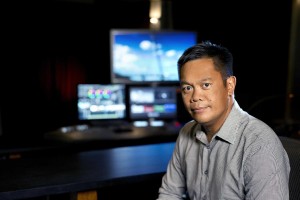
Below the Line: How did you start out in post? Was it luck or a ready, mapped out plan?
Oscar Oboza: I started my career in post as an intern at a facility in Chicago right in the middle of my college years. I was actually majoring in biology, but took a year out to do an internship at a post facility where a friend of mine worked. My friend asked the company if they needed someone in the school year and I gained entry, which is where my eyes were opened up to the world of post and indeed the mystery of color.
In 1985 there was an opportunity to grow this role into something bigger. Within a year I knew that this was the career path that I wanted to follow, so I grabbed the chance with both hands. I knew from then that the postproduction industry was my future.
I am not sure I would say it was by chance that I got into postproduction. I would like to think that I created the opportunities by being willing to learn and through sheer hard work. To some extent it was the luck of being in the right place at right time – but it was also about being able to recognize that there was some greater force at play guiding me down this path. I knew I was interested in the creative side but also really enjoyed the technology and this opportunity to work in postproduction allowed me to grow and feed both interests in tandem.
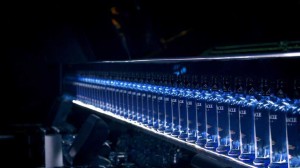 BTL: How did you get into the job as a colorist?
BTL: How did you get into the job as a colorist?
Oboza: The company where I did my internship, Cutters in Chicago was growing. In my early years, it was strictly a creative editorial house, so using a flatbed editor was a big part of my role there. As other opportunities emerged, I started to dabble in other services involving video. One such task involved transferring film, usually a work picture interlock, to ¾” videotape, using a Videola. Basically, the system was a flatbed editor coupled with a video cam, using a prism system to add pull-down – I easily understood the knack of balancing out the camera so the pictures looked good. In turn, I began to develop a real feel and understanding for color.
Because of that interest, I was given the chance to be a colorist at Cutters where I already showed the ability to work with clients as an offline video editor. Initially it was trial-by-fire because I was learning on the job, but I had a real desire and an intuitive feel for color so it was very natural for me to make that transition. All this wouldn’t have been possible if it weren’t for my bosses, who have been my mentors and have supported me throughout. They had the belief that I had a gift and the foresight to steer me towards a rewarding career.
I appreciate the chances that I was given in those early days, and I feel strongly about providing the same opportunities for the young people coming into the business today. My new company, Optimus, strongly shares that same idea through its support of the internship program. My current assistant came through our program here and it is great guiding his career. He particularly spends a lot of time just looking at what the Baselight can do and how to apply those tools. The Baselight is a simple to use system with a myriad of intuitive tools that allows the younger generation with little experience to learn new tricks and ways of improving the visual glory of images quickly and easily.
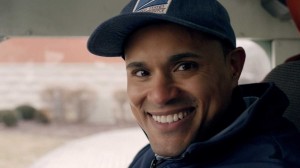 BTL: What gives you a buzz about color?
BTL: What gives you a buzz about color?
Oboza: What I love most about color is what it brings to people. I love how people’s eyes magically open wide and light up when I have interpreted their thoughts onto the screen through the perfect use of color. It is the best feeling to know that you have been able to use your creative powers to “create color,” that is latently there, but up to you to bring it out and show all the possibilities from the shoot. Ultimately I see myself as an extension of the production team who painstakingly prepare everything. We, as the colorists, are just the caretakers – we take what the production team has created to the next level that will “wow” the clients. It is great to have the appreciation for what you do and to be seen as part of the whole collaborative process.
Clients are amazed with the speed at which we work on the Baselight and the tools available right at our hands. It is like being a chef, creating something incredible in front of their eyes – with the ingredients being your gear.
BTL: What sort of jobs do you work on?
Oboza: Chicago is the centre for commercial production so our work mostly revolves around commercials. However we do occasionally do the grading on documentaries and short films. I love my job on commercials, but it is always exciting to do something different as it allows for a different mindset and indeed a different workflow. Doing the grading on documentaries and short films is on a very different scale to commercials but still gives me the chance to create something amazing. For instance, you get a different feel from super grainy images that bring out the mood, which when coupled with the audio, can really create specific emotions. It is all part of the creative side of the brain to react to incredible imagery.
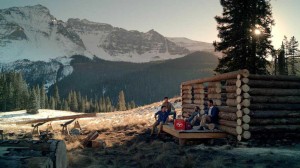 When I am doing a commercial I only listen to audio at the beginning of the grade as it lends itself to how you might approach the grade. So audio plays its part – it’s how the look might be set at the beginning but not so specific.
When I am doing a commercial I only listen to audio at the beginning of the grade as it lends itself to how you might approach the grade. So audio plays its part – it’s how the look might be set at the beginning but not so specific.
BTL: What makes for a good day at the desk?
Oboza: As I said earlier, it is about “wowing” the client and seeing their delight in what we can do with the Baselight – and the speed at which we can do it.
Another one of my passions is to ensure that I am ahead of the curve when it comes to new technology. For me, it is a never-ending quest to gain knowledge and to get my hands physically on new technology. My hunger for knowledge encourages me to try out new things and approaches that may help to improve my art. Learning more about my craft is a never-ending process and is hugely important because standing still is a recipe for disaster. If you stop learning – you die.
Additionally, it is good to have a sense of what is going on around you in the industry as “looks” are always changing. It is important as a colorist to keep abreast of the trends or to break out new trends in the way things look. Looking at each project with a fresh eye, particularly in the commercial world, is imperative to ensure that the commercials look different and stand out – no need here to use existing canned looks. It is also great to discover something new each time, which is part of the fun of being a colorist.
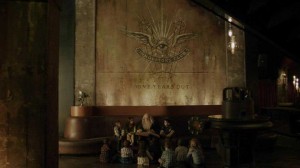 BTL: What is the best project you have ever worked on? And why?
BTL: What is the best project you have ever worked on? And why?
Oboza: Obviously my work is mainly in commercials, but I cannot pick one out as being the best project. It’s like asking me who’s my favorite kid! They are all very different and each project has its striking points. The best projects are where the art director describes what he needs using Photoshop. They describe them in their terms in their world and then we translate that in our world of color. At Optimus we use Baselight to interpret their terms into the final cut. However, the best projects for me are those where there is a great deal of collaboration. So it is where I use Baselight to give the art director the tools they need and to give the client a real sense of working together – talking the same language. The Baselight allows us to use a blend of tools within the system to create the best dish or final cut.
BTL: How much of a part does technology play in the way you work?
Oboza: The technology plays an important part in what we do at Optimus, but we definitely drive the abundant toolsets that are on offer with the Baselight. We are in the service industry, and we have to deliver the client’s vision on a tape or file. They are hiring us for that expertise. Our knowledge is power – we give them what they want and they will return.
BTL: Do you like investigating what technology can do, and how you can push it to deliver something unique? Or do you prefer to go on instinct?
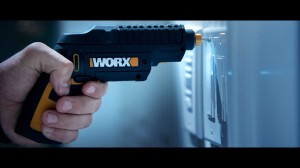 Oboza: I do like to investigate and explore what the technology can really do, albeit in my view I feel there is a high level of instinct involved in knowing what makes a good picture. There is an instant sense of style, which a colorist usually possesses. Additionally, and maybe more importantly, it is about how you work with people. I always say that being a colorist is 20 percent technology and 80 percent people skills. There are some great colorists out there that can be difficult to work with, which means clients just won’t come back. Repeat business is key in our industry, as you always want to satisfy the client’s requirements for capturing the look and feel of a scene and do it in the nicest possible way.
Oboza: I do like to investigate and explore what the technology can really do, albeit in my view I feel there is a high level of instinct involved in knowing what makes a good picture. There is an instant sense of style, which a colorist usually possesses. Additionally, and maybe more importantly, it is about how you work with people. I always say that being a colorist is 20 percent technology and 80 percent people skills. There are some great colorists out there that can be difficult to work with, which means clients just won’t come back. Repeat business is key in our industry, as you always want to satisfy the client’s requirements for capturing the look and feel of a scene and do it in the nicest possible way.
So I would say I go more on instinct, albeit that the brain needs to be properly fed with technology – and how to get there.
BTL: What are the current challenges in getting the look you want?
Oboza: There are a lot of challenges for colorists today, as we tend to work with a mix of camera footage all in different formats. The beauty of the Baselight is that it can accommodate different formats and standards and just allow us to get on with our job.
For instance, we can have a mix of ARRI Alexa and Red cameras on one project. We also see DSLR footage, which is good to start with, but may be limited by technology if we have to match it with Alexa or Red files. We can only go so far with the DSLR footage.
So it can be limiting as we don’t want the DSLR footage to drive the look, but it can work if they are using it as B roll footage. There is a sense that we are expected to bring all formats together and make a cohesive piece. This is limited by formats. You wish you could stretch some footage more but it doesn’t look good on screen. Baselight is an open interpretation that allows you to do that – so it’s not a challenge within the system itself. The limitation is that no one camera does everything.
BTL: Do you find the new generation of raw cameras give you more control?
 Oboza: The new raw cameras, such as ARRI Alexa and RED Epic certainly allow for more control when I’m optimizing the exposure, but it’s still difficult for me to say digital acquisition is better than film.
Oboza: The new raw cameras, such as ARRI Alexa and RED Epic certainly allow for more control when I’m optimizing the exposure, but it’s still difficult for me to say digital acquisition is better than film.
The Red HDR [high dynamic range] output with two different exposures – highlights and the one for everything else – is really useful and I’ve gotten some great looking pictures. I’m certain these and other camera manufacturers will continue to improve and will allow for even greater image control.
With the majority of high-end commercials being shot on digital cameras, Baselight allows me to make it all work, regardless of which particular one the production company chooses.
BTL: Do you see any new projects originated on film today? If so, why do directors choose it, and what can you bring from it to create a distinctive look?
Oboza: It’s pretty rare nowadays to come across film-originated commercial projects. The choice of which medium to shoot on is usually made by the director, and he may be after a certain textural gritty quality to a commercial that film provides. We can use the tools within Baselight to enhance that and bring out the grit, and stretch and bend contrast and tonality, but still keep that certain ‘velvetiness’ in the blacks, and rounding off the highlights in ways that only film can do.
BTL: Why did you decide to move from using Da Vinci to Baselight in 2007? What were the driving factors in that decision?
Oboza: When I worked in Minneapolis I used the Da Vinci system and indeed had used other grading tools, which I continued to use until around 2007. At that point I was looking to make the move to Pixel Farm who asked me what system I would like to work on. When I went to NAB in 2006 to review what was available on the market. I saw a lot of systems there including Autodesk’s Lustre, Da Vinci, etc. I had known of Baselight and followed their development closely, especially after I was asked to sit down for a demo by the FilmLight team. And literally within minutes, I was hooked. I actually felt that I could run a session straight away.
I saw Baselight as my future really, the system is so intuitive – it works the way I like to work. In a way it propelled me into the future, where I could learn new skills and understand new software solutions and workflows. I suppose you could say I was taking a chance by switching, but I felt so strongly about the Baselight system that I was willing to hang my career on it. The choice was instinctive. It felt comfortable, intuitive, and with the ergonomic GUI and controls, it was the perfect tool for me.
The Baselight operations think and work in the same way I do. It can be customized as needed, but it is already laid out in the right way for me. I think this stems from the fact that the philosophy behind the system is that it is made by people within the industry so they get me.





